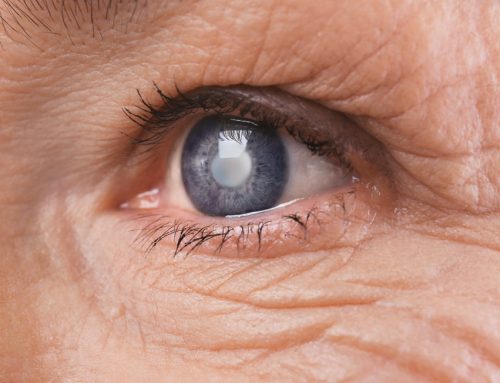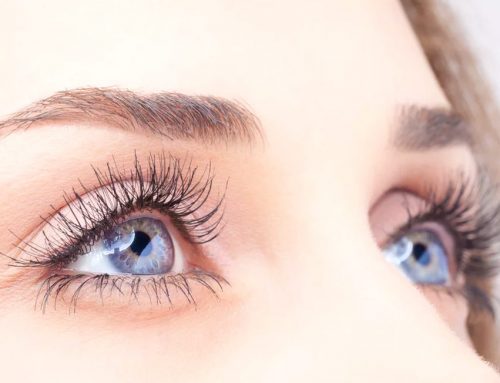Dry eye syndrome is a chronic lack of sufficient lubrication and moisture on the surface of the eye. Its consequences range from subtle but constant irritation to ocular inflammation of the anterior (front) tissues of the eye.
Dry Eye Syndrome Symptoms
Persistent dryness, scratchiness and a burning sensation in your eyes are symptoms of dry eyes. These symptoms alone may prompt your eye doctor to diagnose dry eye syndrome. Dry eyes can become red and irritated, causing a feeling of scratchiness. Another symptom of dry eyes is a “foreign body sensation,” the feeling that something is in the eye. And it may seem odd, but dry eye syndrome can cause watery eyes. This is because dryness on the eye’s surface sometimes will overstimulate production of the watery component of your tears as a protective mechanism.
What Causes Dry Eyes?
Tears bathe the eye, washing out dust and debris and keeping the eye moist. They also contain enzymes that neutralize the microorganisms that colonize the eye. Tears are essential for good eye health. In dry eye syndrome, the lacrimal gland or associated glands near the eye don’t produce enough tears, or the tears have a chemical composition that causes them to evaporate too quickly. Dry eye syndrome has several causes.
It occurs as a part of the natural aging process, especially during menopause; as a side effect of many medications, such as antihistamines, antidepressants, certain blood pressure medicines, Parkinson’s medications and birth control pills; or because you live in a dry, dusty or windy climate. If your home or office has air conditioning or a dry heating system, that too can dry out your eyes.
Another cause is insufficient blinking, such as when you’re staring at a computer screen all day. Long-term contact lens wear is another cause; in fact, dry eyes are the most common complaint among contact lens wearers. Recent research indicates that contact lens wear and dry eyes can be a vicious cycle. Dry eye syndrome makes contact lenses feel uncomfortable, and evaporation of moisture from contact lenses worsens dry eye symptoms.
Tears are composed of three layers:
• the outer, oily lipid layer;
• the middle, watery, lacrimal layer;
• and the inner, mucous or mucin layer.
Each layer is produced by different glands near the eye. The lacrimal gland located above the outer corner of the eye produces the lacrimal layer, for example. So a problem with any of those sources can result in dry eyes.
If you are having issues relating to dry eye as described on this web page then make sure to call the practice and book in for a detailed and thorough dry eye assessment.




